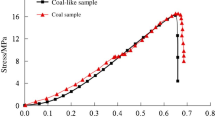Abstract
Drilling riser–conductor system is crucial to the offshore drilling. Complex marine environment can give rise to a series of problems such as buckling and stability on riser–conductor system. A novel method that introduces the optimization of top tension and calculates axial force has been proposed. Effective axial stress equations for the whole riser–conductor system are established in this paper considering these factors such as rising velocity of drilling fluid, temperature, pressure, and current force. Then, the neutral point of effective axial stress is introduced in marine drilling and top tension can be adjusted to ensure the neutral point is located at BOP. Compared with other methods, a case study shows that a higher accuracy of effective axial stress can be expected with this method. Meanwhile, top tension should be optimized to allow the neutral point to locate at BOP and ensure the BOP keep enough bending strength.
Similar content being viewed by others
References
Sun L., Qi B.: Global analysis of a flexible riser. J. Mar. Sci. Appl. 10(4), 478–484 (2011)
Close, F.; McCavitt, R.D.; Smith, B.: Deepwater Gulf of Mexico development challenges overview. SPE-113011-MS (2008)
Guesnon J., Gaillard C., Richard F.: Ultra deep water drilling riser design and relative technology. Oil Gas Sci. Technol. 57(1), 39–57 (2002)
Ju S.D., Chang Y.J., Chen G.M. et al.: Determination methods for the top tension of ultradeepwater drilling risers. Ocean Eng. 29(1), 100–104 (2011)
Su K.H.: Analysis on Mechanical Stability of Subsea Wellhead and Bearing Capacity of Conductor for Deepwater Drilling. China University of Petroleum, Qingdao (2009)
King G.W., Kevin D., Trevor H.: A coupled analysis approach to the assessment of marine drilling systems. SPE Drill. Completion 8(02), 131–137 (1993)
API R.P.: 16Q, Recommended Practice for Design, Selection, Operation and Maintenance of Marine Drilling Riser System. Washington (1993)
Deli G., Zhiyong H.: The definition of two special points of drill string and calculation methods. J. East China Pet. Inst. 1, 002 (1987)
Yang H., Xiao F., Xu P.: Parametric instability prediction in a top-tensioned riser in irregular waves. Ocean Eng. 70, 39–50 (2013)
Jin Y.A.N.G., Wei M.E.N.G., Mengbiao Y.A.O.: Calculation method of riser top tension in deep water drilling. Pet Explor. Dev. 42(1), 107–110 (2015)
Akgun F., Jawad R.H.: Determination of friction factor of fluids flowing turbulently through an eccentric annulus. Int. J. Pet. Sci. Technol. 1(1), 37–49 (2007)
Guan Z.C.: Drilling Engineering Science and Technology, pp. 84–98. China University of Petroleum Press, Qingdao (2006)
Chang Y.J.: Design Approach and Its Application for Deepwater Drilling Risers. China University of Petroleum, Qingdao (2008)
Shi P.D.: Handbook of Pile Foundation Engineering, pp. 68–90. China Architecture & Building Press, Beijing (1999)
Haige W.A.N.G., Yansheng L.: Effect of temperature and pressure on drilling fluid density in HPHT wells. Drill. Prod. Technol. 23(1), 56–60 (2000)
Liu, X.; Chen, G.; Chang, Y.; Zhang, L.; Liu, K.: Study on Deepwater Drilling Riser Wear. OTC-24993-MS (2014)
Azar, J.J.; Soltveit, R.E.: A comprehensive study of marine drilling risers. SPE-7200-MS (1978)
Agarwal A.K., Jain A.K.: Dynamic behavior of offshore spar platforms under regular sea waves. Ocean Eng. 30(4), 487–516 (2003)
Yan W., Chen Z.J., Deng J.G., Zhu H.Y., Deng F.C., Liu Z.L.: Numerical method for subsea wellhead stability analysis in deepwater drilling. Ocean Eng. 98, 50–56 (2015)
Deng, S.; Li, C., Fan, H., Wang, Z., Peng, Q., Feng, X.: Impact evaluation of internal solitary waves on a drilling riser. In: The Twenty-fifth International Offshore and Polar Engineering Conference (2015)
Hu Y., Heng L., Xingjin X.: The prediction of the density of water base fluid in offshore deep water drilling. Drill. Fluid Completion Fluid 25(6), 4–5 (2008)
Baojiang S., Zhennan Z.: Challenges and countermeasures for the drilling and completion of deepwater wells in the South China Sea. Pet. Drill. Tech. 43(4), 1–7 (2015)
Wang Y., Gao D., Fang J.: Static analysis of deep-water marine riser subjected to both axial and lateral forces in its installation. J. Nat. Gas Sci. Eng. 19, 84–90 (2014)
Li C., Fan H., Wang Z., Ji R., Ren W., Feng X.: Two methods for simulating mud discharge after emergency disconnection of a drilling riser. J. Nat. Gas Sci. Eng. 28, 142–152 (2016)
Author information
Authors and Affiliations
Corresponding author
Rights and permissions
About this article
Cite this article
Deng, S., Fan, H., Shen, W. et al. An Optimization Method of Top Tension in Drilling Riser–Conductor System. Arab J Sci Eng 41, 2707–2714 (2016). https://doi.org/10.1007/s13369-016-2119-1
Received:
Accepted:
Published:
Issue Date:
DOI: https://doi.org/10.1007/s13369-016-2119-1




